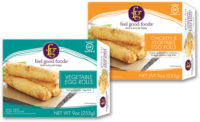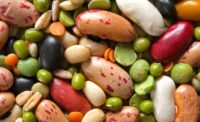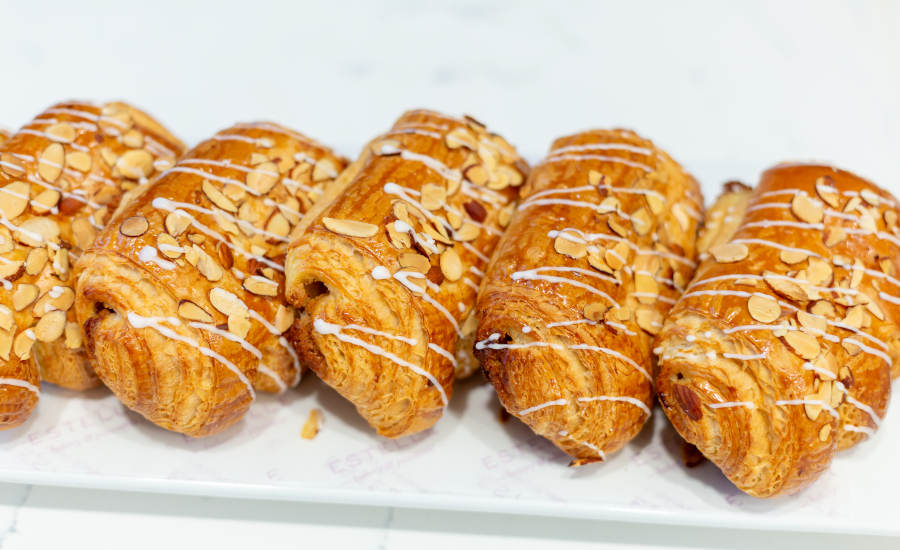Developing nutritious and appealing bakery snacks
With today’s R&D resources, developing tasty and nutritious bakery snacks is within reach




Despite better-for-you and health trends transforming essentially every food and beverage category, the indulgent bakery snack market—including snack cakes, pastries, doughnuts, and muffins—is generally faring well. People like to treat themselves from time to time, and the sales track record for these product areas continues to show strength.
IRI, Chicago, divides this market into distinct categories for bakery snacks and pastry/doughnuts, with the latter segmented into subcategories for pastry/Danish/coffee cakes, doughnuts, and muffins.
The bakery snacks category posted 2.2 percent growth in the 52 weeks ending March 22, 2020, reaching sales of just over $3.5 billion. Nearly every company in the top five for this category showed growth for the year, with bakery snack sales at Flowers Foods off a negligible 0.1 percent. Further down in the category, JJ’s Bakery, a JTM Foods, LLC, brand, saw sales of its snack pies grow 7.5 percent to $49.0 million. Also, Starbucks Coffee Co. has started to gain ground, up 11.0 percent to $37.5 million.
The overall pastry/doughnuts category grew 3.5 percent to $5.3 billion, per IRI. The pastry/Danish/coffee cakes segment within the category grew 3.3 percent to $2.1 billion, with the highest rate of growth coming from Hostess Brands, up 15.8 percent to $204.6 million. Bon Appetit Danish Inc. likewise saw strong growth, up 10.4 percent to $274.4 million. In the doughnuts segment, Bon Appetit grew 23.4 percent to $21.0 million. Clyde’s Delicious Doughnuts also saw a strong year, up 15.0 percent to $21.6, per IRI. The muffins segment performed well, posting 7.6 percent growth to $1.3 billion. Segment leader Grupo Bimbo saw great growth of 16.3 percent to $470.4 million. Give & Go Prepared Foods Corp., now a Mondēlez International business, saw its muffin sales grow by 34.3 percent to $31.5 million.
Trend tracking
“Consumers continue to treat themselves, with various frequencies, to indulgent food regardless of their connection to health and wellness,” says Janelle Crawford, regional marketing lead, DuPont Nutrition & Health, Wilmington, DE. That said, the best way brands can appeal to indulgence-seeking consumers, specifically, is to offer elevated versions of traditional favorites.
For example, upscale restaurants have embraced the humble doughnut as a dessert, and specialty doughnut shops are destinations for sweet-toothed shoppers, notes Jamie Mavec, marketing manager, global edible oil solutions, Cargill, Minneapolis. “Consumers crave experiences, and doughnuts are delivering. We’ve seen bakeries offering decadent fillings like passionfruit or lemon curd, cake riffs like red velvet or pineapple upside down, savory pairings like bacon and eggs or cream cheese and lox, and nostalgic toppings like s’mores, maple and bacon, and breakfast cereals.”
To meet taste demands, Bunge Loders Croklaan, Chesterfield, MO, offers Vream Elite specialty shortenings, designed to maximize the taste, texture, and functionality of icings, cakes, doughnuts, and cookies. “Vream Elite is made by using enzymes to blend high-stability soybean oil and soy hard fat,” explains Mark Stavro, senior director of marketing. “It enables bakers to create bright-white icings, high-volume cakes, flaky pie crusts, velvety doughnuts, and soft and chewy or crispy cookies.” It also has optimal workability across temperatures, shows creaming capabilities with all types of ingredients, and minimizes post-hardening.
Proprietary research from Cargill shows that Americans are generally demanding more from their bakery snacks, with natural and organic attributes still important characteristics across the board. This brings a “better-for-you” halo to the category.
To attract today’s discerning shopper, brands must pivot toward simple, unprocessed, clean-label ingredients and finished products, says Laura Gerhard, director of strategy and marketing, Blue Diamond Almonds Global Ingredients Division, Sacramento, CA. “Many are increasingly looking for better-for-you versions of their favorite sweet goods,” she says.
But traditional bakery snacks are still very much in-demand, says Mel Festejo, COO, American Key Food Products, Closter, NJ. However, he agrees that the category is seeing more-pronounced growth in pockets of specialty products.
When it comes to bakery snacks for kids, for example, Cargill’s research shows that adults put more emphasis on nutritional value like whole grains and protein. That helps build more modern-day appeal.
“These ingredients promise better nutrition and health benefits, while helping snack products to be in vogue and appealing again, rather than being lumped together in the junk food basket,” Festejo adds.
A better-for you groove
When appealing to better-for-you shoppers, it isn’t one size fits all. “Brand and product innovation can target desired market segments with solutions that deliver benefits such as protein, fiber, energy/satiety, incorporation of fruits and veggies, and sugar reduction,” says Crawford. “That said, it’s still important to know your consumers and innovate according to the market segments of interest, not all of which are nutrition-focused. And even within those that are, the needs and tradeoffs vary from group to group.”
For example, especially in the bakery snack space, lowering sugar is of importance to many consumers. This may translate to smaller-sized full-sugar portions, or it may translate to reformulation to offer lower sugar levels entirely, suggests Pam Stauffer, global marketing programs manager, Cargill.
For General Mills Convenience & Foodservice, Minneapolis, offering mini or individually portioned bakery snacks is one way to for consumers to indulge while keeping their sugar intake in check. New mini offerings include Pillsbury Mini Cinnamon Rolls.
However, many brands are looking at their formulas and seeking to lower sugar content regardless of serving size. At Cargill, formulators have been able to reduce sugar content by 25 percent by using stevia, erythritol, and chicory root fiber, yet still kept cost-of-use in check while delivering on consumer expectations for an indulgent treat, says Stauffer.
At Van Drunen Farms, Momence, IL, Gary Augustine, director of marketing, points out that the use of freeze-dried fruits and vegetables can add flavor and sweetness while minimizing added sugars and artificial ingredients. On-trend fruits include bananas, blueberries, mangos, açaí, maqui berry, and strawberries, he says. Trending vegetables for bakery snacks include carrot, cauliflower, pumpkin, and sweet potato, which can be used alone or in combination with other sweet ingredients, such as chocolate.
“Bakeries and snacking have in some cases pulled away from fat and sugar, and are including flax seed, dark chocolate, wheat germ, cranberries, oats, prunes, dates, and more into baked goods creating high-fiber, low-sugar items,” says Darren Belnavis, global corporate chef and director of culinary, The Hershey Company, Hershey, PA. By upping the ante with innovative but simple flavors, low-sugar options can still complete on indulgence. Ingredients fitting the bill, he says, include ginger, cardamom, green tea matcha, curry powder, dragon fruit, banoffee (banana and toffee), spiced chocolate, or heat from peppers.
Fat is also a nutritional consideration. Cargill’s annual proprietary FATitudes research revealed that 68 percent of consumers across 12 countries, including the U.S., say they closely monitor the type and amount of fat and oil in their packaged foods. In the U.S., specifically, 56 percent say they pay close attention to fats and oils, with nearly two-thirds indicating they avoid certain fats and oils. As for clean-label seekers, they’re even more discerning, with 83 percent reporting they avoid certain fats and oils. This is changing the game in a variety of bakery snack segments.
“The ban on partially hydrogenated oils (PHOs) really hit doughnut makers hard,” says Mavec. “That’s because PHOs worked so well in doughnut frying. They had a long fry life, clean flavor, and the fat set up on the doughnut surface quickly after coming out of the fryer. All these attributes contributed to the efficiency of the operation, as well as the appeal to the consumer.”
Generally, palm oil shortenings have fallen short as adequate replacements, says Mavec, since they impart an unwanted flavor and don’t set up as quickly as PHO. But Cargill’s new PalmAgility doughnut fry shortening is looking to change this reputation. “We’ve done extensive lab testing on these doughnut fry shortenings and found they perform very well on key attributes like set up time, flavor and mouthfeel, freeze/thaw stability, and reduced oil weeping,” she says.
The gluten-free trend is another area that’s impacting bakery snacks. Using alternative flours is one way to appeal to the gluten-free shopper, and Blue Diamond Almond Flour can help formulators offer consumers gluten-free versions of their favorite bakery snacks. “Blue Diamond Almond Flour is a popular alternative to traditional flour, because it contains the same nutritional properties as whole almonds, is low on the glycemic index, and is naturally gluten-free,” says Gerhard. Plus, it offers nutrients that may be missing from many gluten-free products like protein, calcium, fiber, and iron.
Traditional ethnic ingredients are also seeing use in bakery products aligned with better-for-you and specialized dietary trends, notes Festejo. For example, American Key Food Products offers a premium flour made from cassava that can work in gluten-free, grain-free, and/or Paleo-friendly bakery snacks. The company also promotes a superfine rice flour from Kumamoto Flour Milling. “Through its small and relatively uniform particles, it provides a better volume, texture, and crumb structure consistency that elevates the quality in any bakery snack, such as doughnuts and cakes,” Festejo adds.
Some items, like muffins, can benefit from added protein claims. “Breakfast muffins typically lend themselves to more-healthful formulations and innovations, as consumers look to start their day with added protein, fiber, or other nutritional benefits,” says Stauffer. At Cargill, PURIS pea protein has been successfully formulated in muffin recipes to reach 6 grams of protein.
Blue Diamond Almond Protein Powder offers bakery snacks added plant-based protein, in addition to magnesium, phosphorus, manganese, copper, fiber, potassium, and calcium. “It blends well with other proteins, and its mild flavor and extra-fine texture make it ideal for bakery snacks,” says Gerhard.
Future thoughts
Going forward, the market can expect to see non-bakery companies entering the space as lines between categories further blur, says Crawford. To keep up, brands will continue to pursue tactics that offer variety, like releasing limited-time offers, line extensions, new flavors, and seasonal concepts. “We can expect to see more mash-ups, global flavor influences, and the use of bright, bold colors in the future,” says Kelley Walhof, assistant manager of brand experience, General Mills Convenience & Foodservice.
An ingredient to watch is cannabidiol (CBD) derived from hemp, says Augustine, as consumers seek products that enrich not just the body, but also the mind.
“We’re also going to see increased interest in more personalized snack options,” says Stauffer. “Consumers are becoming more fragmented in the way they approach health and consume food. In the future, we may see more small-batch snacks aimed at targeted opportunities. The key to success may be finding these new specialized areas of opportunity and meeting consumers’ snacking needs before they themselves know what they are.”
Looking for a reprint of this article?
From high-res PDFs to custom plaques, order your copy today!









